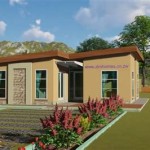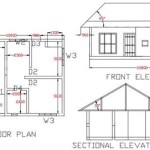Essential Aspects of Wild Rabbit House Plans
Wild rabbits are a fascinating and beautiful addition to any backyard. However, these animals have specific needs, and providing them with a suitable home is crucial for their well-being. If you're planning to build a wild rabbit house, there are several essential aspects to consider to ensure it meets their requirements.
Size and Space
Wild rabbits need ample space to move around freely. The minimum recommended size for a single rabbit is 24 square feet, and for pairs, it's 30 square feet. The height of the house should be around 18 to 24 inches to allow the rabbits to stand upright.
Materials
The materials you choose for the house should be durable and weather-resistant. Treated lumber, cedar, and plastic are all good options. Avoid using materials that may be toxic to rabbits, such as galvanized metal.
Ventilation
Good ventilation is essential for preventing respiratory problems in rabbits. Provide multiple ventilation holes in the walls and ceiling, allowing for air circulation to prevent ammonia buildup.
Nesting Box
Rabbits require a dark, secluded nesting box to raise their young. The nesting box should be approximately 12x12x12 inches in size and have a 4-inch entrance hole. Provide soft bedding material, such as hay or straw, inside the nesting box.
Multiple Entrances
Include multiple entrances to the house to allow the rabbits to escape in case of danger. The entrances should be located at different heights to accommodate rabbits of various sizes.
Placement
Choose a location for the house that provides protection from predators, rain, and wind. Avoid placing the house in areas exposed to direct sunlight, as rabbits can overheat easily.
Access for Cleaning
Make sure the house is easy to clean to maintain a healthy environment for the rabbits. Provide a removable roof or side panel for easy access.
Other Considerations
In addition to the essential features mentioned above, there are a few other factors to consider when designing a wild rabbit house:
- Perches: Rabbits enjoy sitting up high to survey their surroundings. Provide perches or platforms inside the house.
- Toys and Enrichment: Rabbits need mental and physical stimulation. Include toys, such as hay racks, tunnels, and cardboard boxes, to keep them occupied.
- Predator Protection: Ensure the house is secure against predators by using sturdy materials and placing it in a safe location.
- Burrows: Wild rabbits dig burrows for shelter and protection. Provide a small burrow box or tunnel inside the house to meet their natural instincts.
By incorporating these essential aspects into your wild rabbit house plans, you can provide your furry friends with a comfortable, safe, and healthy home.
:strip_icc()/free-rabbit-hutch-plan-buildeazy-5bbcce7946e0fb002660495c.png?strip=all)
8 Free Diy Rabbit Hutch Plans

Gallery Of La Maison Plissée Wra Wild Rabbits Architecture 33

Diy Rabbit Hutch Plans Free Easy Rogue Engineer Hutches

Gallery Of La Maison Plissée Wra Wild Rabbits Architecture 31

Gallery Of La Maison Plissée Wra Wild Rabbits Architecture 37

Gallery Of La Maison Plissée Wra Wild Rabbits Architecture 32

Gallery Of La Maison Plissée Wra Wild Rabbits Architecture 34

Setting Up An Outdoor Rabbit Space The Cape Coop

Gallery Of The Paper Nursery Wild Rabbits Architects 15

25 Free Rabbit Hutch Plans To House Your Furry Friends Insteading








